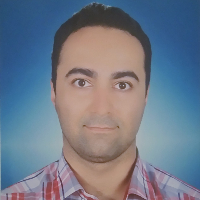Investigation on single nucleotide polymorphism of BMPR1B and GDF9 genes in Mughani, Afshari and Baluchi ewes
Sheep are used as a genetic model to study the relationship between genetic diversity and ovulation rate. Previous studies have shown that ovulation rate and litter size can be controlled by a set of genes called fecundity genes . Three fertility genes have been identified in sheep called BMPR1B or FecB, GDF9 or FecG and BMP15 or FecX. Tetra-ARMS-PCR is a suitable alternative method in the context of expensive methods such as sequencing and PCR-RFLP to identify SNPs whose sequences are known. The entry of the Booroola allele into the Afshari breed increased the frequency of litter size. The aim of this study was to investigate the polymorphism of two fertility genes including FecB and FecG in Mughani, Afshari and Baluchi sheep in Khorasan Razavi province.Blood samples were taken from 95 Afshari, Baluchi and Mughani sheep. Two pairs of control (outer) and specific (inner) primers were used to amplify FecB and FecG gene fragments by the Tetra-ARMS PCR method. Temperature cycling of PCR amplification for FecB started at 94°C for 4 minutes, followed by 35 cycles consisting of 94°C for 25 seconds, annealing temperature at 54°C for 35 seconds, extension at 72°C for 20 seconds and a final extension at 72°C for 5 minutes. For amplification of the G1 point mutation on the FecG gene, the annealing temperature was 54°C for 35 s, extension was 70°C for 40 s, and final extension was 70°C for 5 minutes. The PCR products were electrophoresed on a 2% agarose gel.Three genotypes have been observed for the FecB gene in Afshari sheep; wild homozygous (++), heterozygous (B+) and homozygous mutant (BB). All Mughani and Baluchi sheep were homozygous for this gene. A 108 bp band was detected for mutant homozygotes. A band of 213 bp was observed in wild homozygotes. The frequency of wild homozygotes was high in the three breeds,. The frequency of the wild allele in this breed was 0.39 and that of the mutant allele 0.61, the overall frequencies for the three breeds being 0.8 and 0.2, respectively. The result of Tetra-ARMS-PCR for the G1 point mutation of the GDF9 gene showed polymorphism in all three breeds, however, the frequency of wild homozygotes was high. In the Balochi breed, only two animals (4%) were heterozygous and 96% of the animals showed the wild homozygous genotype. In the Mughani breed, 16% were heterozygous and only one animal was homozygous mutant. In addition, only one heterozygote was observed in the Afshari breed. Several studies have shown the association of the FecB, FecG and FecX genes with litter size in sheep. Due to the high frequency of wild homozygotes and the fact that Mughani and Baluchi ewes mostly gave birth to single lambs, the role of FecB mutation in litter size of Afshari ewes was observed. The ram used in this herd was heterozygous for FecB. In general, it can be concluded that the mutant FecB allele has a correlation with litter size in Iranian sheep. However, the statistical confirmation of this issue requires a dedicated study with a detailed record of reproductive traits.The results of this study demonstrated the presence of a Booroola mutation in the Afshari ewes that were offspring of heterozygous rams. In addition, all of these ewes had litter size in at least one of the two pregnancies. Hence, the Booroola mutation may potentially increase the litter size of ewes. However, a more comprehensive study measuring biological indicators such as sex hormone levels, ovulation rate and follicle size is needed to demonstrate the effect of these types of mutations on increasing fertility.
-
Recombinant Glutamate Decarboxylase to Increase Gamma-aminobutyric Acid Production
Hanieh Yarabbi, Sahar Roshanak, Seyed Ali Mortazavi, Masoud Yavarmanesh *,
Research and Innovation in Food Science and Technology, Autumn 2024 -
In ovo Inoculation of cLF36 on Post-hatch Performance, Intestinal Histo-morphometry and Microflora of Broiler Chickens Challenged with Clostridium perfringens
Seyed Mohammad Mahdi Sadati, Hassan Kermanshahi *, Mohammad Hadi Sekhavati,
Poultry Science Journal, Summer -Autumn 2024 -
Dietary incorporation of magnetic bentonite nanocomposite: impacts on in vitro fermentation pattern, nutrient digestibility, and growth performance of Baluchi male lambs
E. Ibrahimi Khoram Abadi *, S. Heydari, M. Kazemi
Iranian Journal of Veterinary Research, Winter 2024 -
Effect of Different Light Spectral on Photosynthetic Performance, Growth Indicators and Essential Oil Content of Salvia officinalis L.
M. Moradi, B. Abedi *, H. Arouiee, S. Aliniaeifard, K. Ghasemi Bezdi
Journal of horticulture science, -
بررسی کالوس زایی رزماری در شرایط کشت بافت تحت تاثیر عوامل هورمونی، نوع ریزنمونه و زمان یادداشت برداری
، حمید حیدری زادی، مینا ربیعی
نشریه زیست فناوری گیاهان دارویی، بهار 1394




